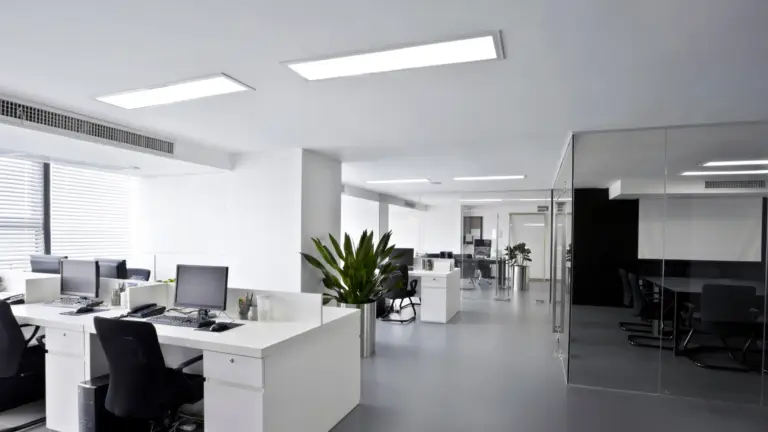The office rental market is an appealing option for both investors and entrepreneurs. The demand for well-designed and functional office spaces continues to grow. In this article, we will explore the process of creating office spaces for rent, highlighting design, key considerations, and the benefits that this investment can offer.
To view AH Construction’s projects click HERE
1. Office Space Design
Office space design plays a crucial role in attracting tenants. Some aspects to consider include:
- Efficient Layout: Design spaces that allow for an efficient distribution of workstations, meeting areas, and common zones.
- Natural Lighting: Maximize natural light to create a pleasant and productive environment.
- Modern Amenities: Include well-equipped kitchens, bathrooms, and rest areas for tenants’ convenience.
- Technology: Incorporate advanced technology infrastructure, such as high-speed connectivity and security systems.
2. Strategic Location
Location is a critical factor in the success of your office space. Consider:
- Accessibility: Choose a location that is easily accessible by car or public transportation.
- Surroundings: Proximity to restaurants, shops, and other services can enhance the appeal of your office space.
- Market Demand: Research the demand for office spaces in your chosen location.
3. Lease Flexibility
Offer flexibility in lease terms to attract a wide range of tenants, from startups to established companies. This may include options for short and long-term leases, as well as the ability to expand or reduce space as needed.
4. Services and Amenities
Provide services and amenities that make your office space appealing. This may include:
- Reception: Offer reception services to greet visitors and handle mail.
- Meeting Spaces: Provide well-equipped conference rooms for meetings and presentations.
- Cafeteria or Kitchen: Create areas where tenants can prepare meals and socialize.
5. Maintenance and Cleaning
Maintaining a clean and well-maintained space is essential for tenant satisfaction. Consider hiring regular cleaning and maintenance services to ensure the proper presentation of the space.
6. Marketing and Promotion
Effectively market your office space through online and offline marketing strategies. Utilize social media, websites, and collaborations with real estate agents to reach potential tenants.
7. Financial Benefits
Investing in office spaces for rent can yield significant financial benefits, including regular rental income and the potential for property value appreciation over time.
8. Legal and Regulatory Considerations
Ensure compliance with all local laws and regulations related to office space rental. This includes lease agreements, taxes, and safety requirements.
9. Tenant Relations
Fostering strong tenant relationships is crucial. Listen to their needs and respond effectively to their requests to maintain a consistent occupancy rate.
10. Ongoing Evaluation
Conduct periodic evaluations of your office space to identify improvement opportunities and ensure that it remains competitive in the rental market.
In summary, creating office spaces for rent is a valuable investment that can generate long-term income and benefits. Careful design, a strategic location, and effective management are key to success in this continuously growing market. Additionally, flexibility and attention to tenant needs are essential to maintain high occupancy and long-term satisfaction.
To view AH Construction’s projects click HERE




